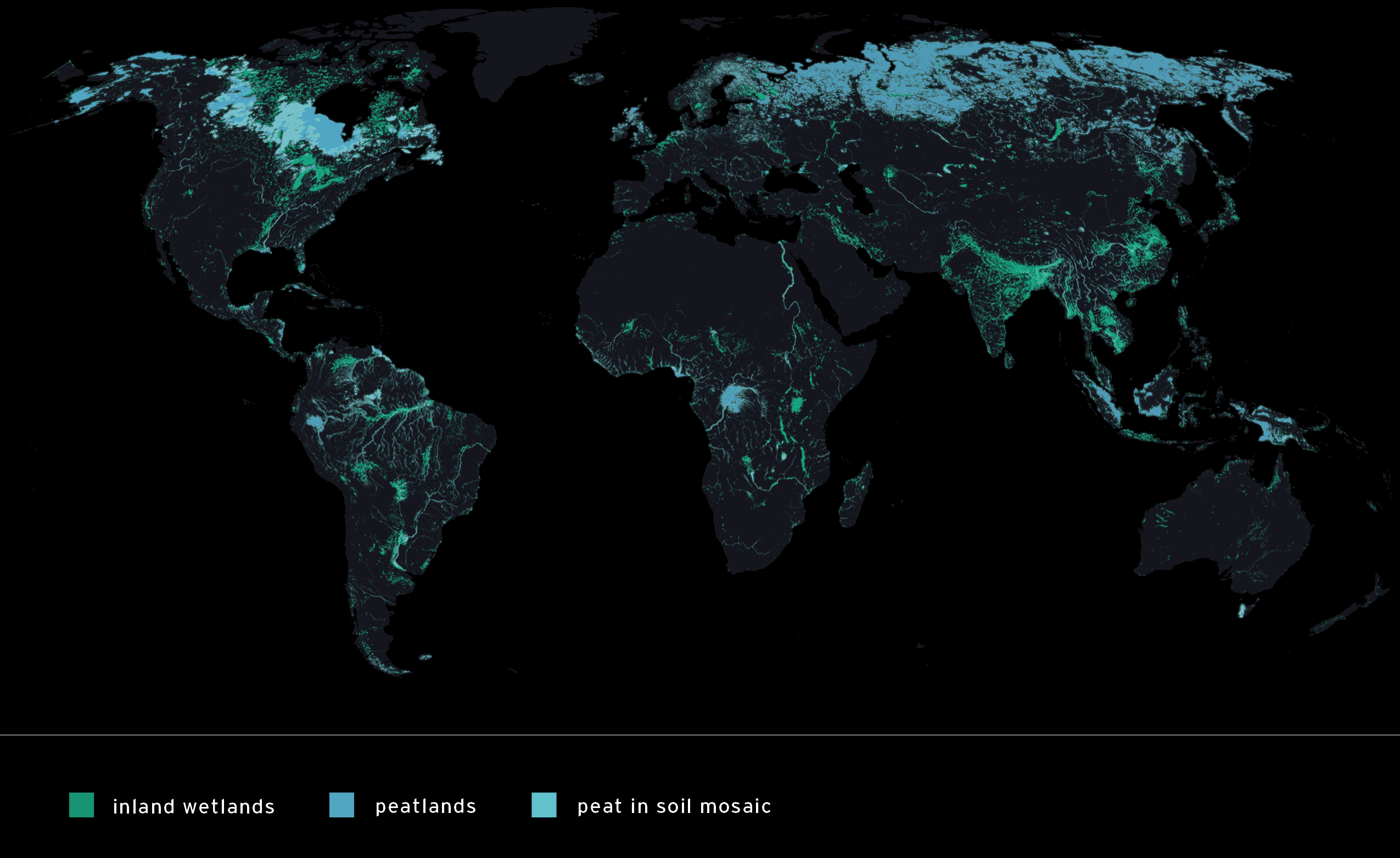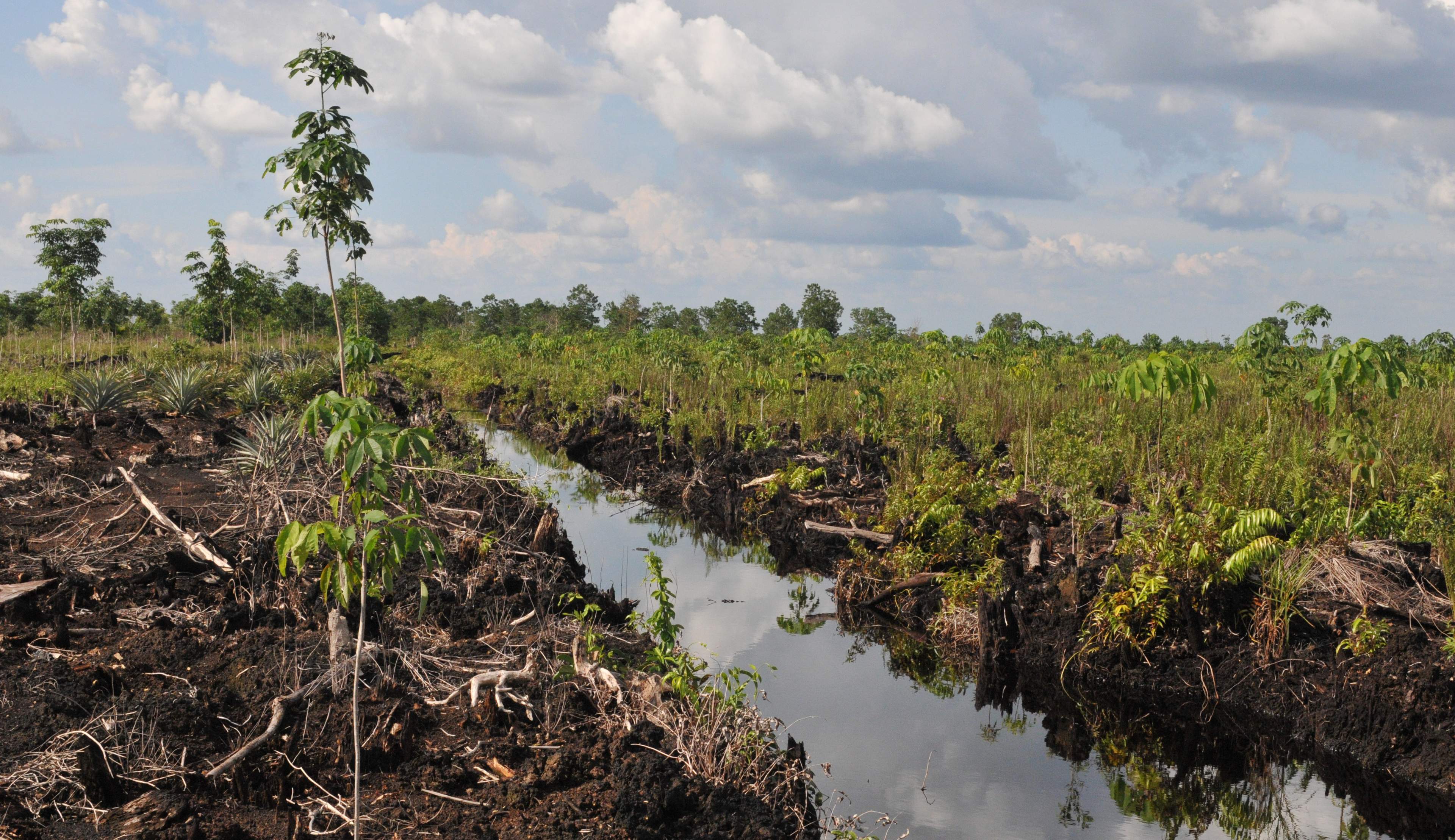Restore peatlands

"AN ESTIMATED 15% OF THE WORLD'S PEATLANDS HAVE BEEN DEGRADED SO FAR... 50% OF THAT DEGRADATION IS FOR AGRICULTURAL LAND USE.
"Despite covering only 3 percent of the global land area, [peatlands] hold 30 percent of all soil carbon, amounting to at least 500 gigatons – twice the carbon stock of all forest biomass. Unlike most terrestrial ecosystems, peatlands do not reach saturation, and continue sequestering carbon in soil organic matter for centuries or millennia."
Source: Inland Wetlands Map – Fluet-Chouinard, E., Lehner, B., Rebelo, L.M., Papa, F., Hamilton, S.K., (2015) "Development of a global inundation map at high spatial resolution from topographic downscaling of coarse-scale remote sensing data," Remote Sensing of Environment, 158: 348-361. | Peatland Map – Peatland Distribution. Global Peatland Datatbase. 2022. Greifswald Mire Centre. UNEP. Global Peatlands Initiative. German Ministry for the Environment. International Climate Initiative. | quotation - Project Drawdown, Peatland Protection and Rewetting. Image Source: Irdyn swamp, Ukraine. wikimedia commons, CC BY-SA 4.0

RESTORING PEATLANDS BY REWETTING HAS BEEN DEMONSTRATED TO REDUCE GREENHOUSE GAS EMISSIONS.
"As a long term carbon store they are hugely important... removing carbon from the atmosphere and storing it in the peat under waterlogged conditions. Drained peatlands on the other hand are a significant source of carbon emissions with less than 0.3% of the land area giving rise to almost 6% of total global anthropogenic CO2 emissions."
Source: IUCN National Committee United Kingdom. Global Peatland Restoration: Demonstrating Success. | Image: Anna Finke. CIFOR. Flickr CC 2.0
Next solution



Learn about Maya Lin’s fifth and final memorial: a multi-platform science based artwork that presents an ecological history of our world - past, present, and future.

Discover ecological histories and stories of former abundance, loss, and recovery on the map of memory.

Learn how we can reduce our emissions and protect and restore species and habitats – around the world.

See how art can help us rethink the problems we face, and give us hope that each one of us can make a difference.

Help make a global memorial something personal and close to home. Share your stories of the natural world.